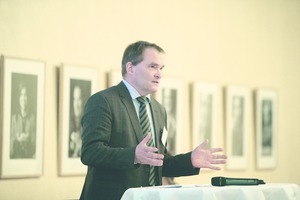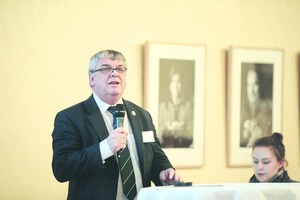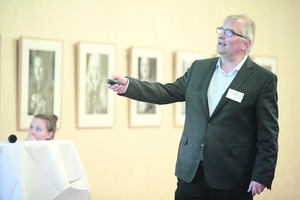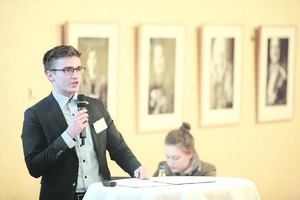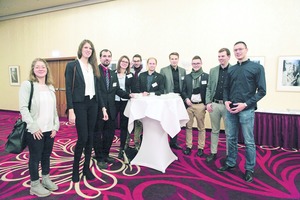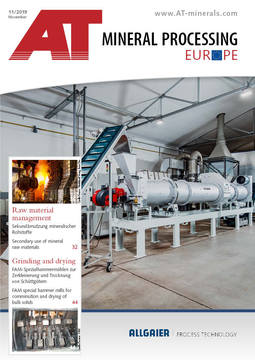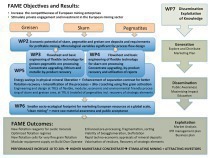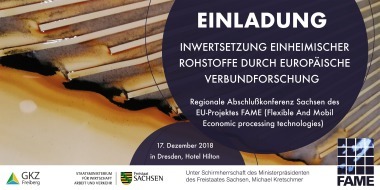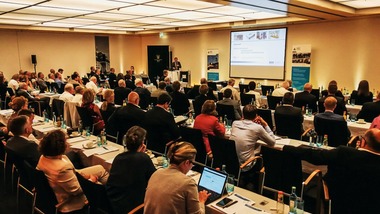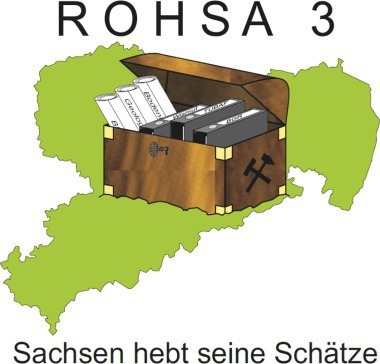FAME Regional Concluding Conference for Saxony
Following the speech of welcome by FAME project manager Dr. Wolfgang Reimer, of the Freiberg Geocompetence Centre (GKZ), in which he focussed, above all, on the importance of this project for mining in Saxony, the FAME project coordinator, Dr. Chris Broadbent, Research Director, Wardell Armstrong International, also bade the conference participants sincerely welcome with an overview of the FAME project, under the watchword of “FAME Flexible And Mobile Economic processing technologies”.
The opening series of papers, “Insights and prospects”, commenced with a presentation by Dr. Robert Franke, head of the Dresden Economic Development Service, on the topic of “Mobility, energy supplies and data-flow – Dresden on the road to the Smart City. A contribution to the HORIZON 2020 project MAtchUp, in which, among other things, the ambitious goals of the e-mobility expansion of the city of Dresden were presented and which correspond in terms of resources with the native lithium deposits, as treated in FAME. Without lithium and thus no raw materials, no e-mobility, so the message of both projects “.
“From earth into space – indium, gallium, tungsten and rhenium as the basis for revolutionary space propulsion systems”, was presented by Prof. Dr. Martin Tajmar, head of the Chair of Space Systems and director of the Institute of Aerospace Engineering, TU Dresden – critical metals play a major role in the quest for new propulsion systems for space vehicles. New directions in electricity-based propulsion technology are in this way being researched and developed.The same applies to “Mobility in Space”: no future without raw materials!
The second series of papers examined “Saxony’s mineral-resources base and the boundary conditions”. Prof. Dr. Reimar Seltmann, of CERCAMS, Natural History Museum, London, spoke on the “Genesis of the Sn-W-Li deposits in the Variscan orogeny and the challenges of their recovery and preparation”, devoting special attention to the tin and tungsten deposits in the Erzgebirge mountains and in Portugal showing the European dimension of domestic raw materials.
Dr. Marco Roscher, CEO at SAXORE Bergbau GmbH, discussed the conception of a new tin, zinc and indium mine in Saxony. Examining a sample volume of 140 t in the co-operation of the FAME project with the AFK project presented below, expectations were exceeded. Future winning operations are to be entirely electrically powered and highly automated, with the preparation facilities sited underground.
The address by Prof. Dr. Jan Rosenkranz, of Lulea University of Technology, Sweden, centred around an entirely different subject – this paper concentrated on the definition of criteria for environmental and social impact assessments, the reduction of effects on the environment, health and safety, on the development of environmental and social management plans, etc..
The “Basic Research” papers again focussed on Saxony’s domestic mineral resources.
“Computer-assisted system analysis for the optimisation of preparation of complex fine-particled ores”; the aim here is not necessarily to predict what an existing plant will do, but rather what a plant could achieve with appropriate improvements, as was emphasised by AFK project coordinator Prof. Dr. Gerald van den Boogaart, of the Helmholtz Institute Freiberg for Resource Technology (HIF).
The topic on which Dr. Irina Bremerstein, of UVR-FIA GmbH, reported was “The pilot plant for preparation of skarn ore from the Tellerhäuser deposits as a result of German-European cooperation on the FAME and AFK projects”, examining the special features of sampling and the methods applied for evaluation. A total of over 800 samples were taken and evaluated.
Mirko Martin, of GEOS Ingenieurgesellschaft mbH, examined the optimisation of physical and chemical processes for the preparation of lithium ores of the Variscan orogeny. He discussed the individual preparation stages and their effectiveness, these involving both physical and chemical preparation operations, such as leaching.
The final session of the day then examined the tin markets and backward integration. The subject of the paper entitled “Challenges for small and medium-sized metallurgical plants in the field of assuredness of resources supplies” by Tobias Patzig, Holder of Procuration, Feinhütte Halsbrücke GmbH, was the preparation of secondary feed materials, a growing source of resources.
“The current tin market and global developments – potentials and risks for the exploitation of domestic deposits”, presented by Dr. Harald Elsner, of the Federal Institute for Geosciences and Natural Resources, department of Geology of Mineral Resources, focussed, alongside further market information, above all the profitability of mining, which sets many reservoirs from today’s perspective limits in their development. On the other hand, there are strategic considerations of securing raw materials, which are common in many countries. As an example, the following lecture in this topic led to the example of China.
“Made in China 2025 – a gauntlet cast at Germany’s feet. An introduction to the economic-policy targets and backgrounds of the People’s Republic of China”, by Meng-Chun Lee, GKZ Freiberg, presented an interesting look at the mechanisms of Chinese economic policy, to which German politics and economics, and ultimately the European, will have to adapt.
This concluding conference presented, overall, an interesting and highly diversified event. The subjects discussed focussed very intensively on the winning and preparation of domestic mineral resources, and also gave an indication of the direction for the future, which will, without doubt, need to solve numerous intriguing questions.
More articles about the FAME project have already been published in AT 01/2017, S. 57 FF; AT 05/2019, S. 52 ff; AT 06/2019, S. 48 ff

